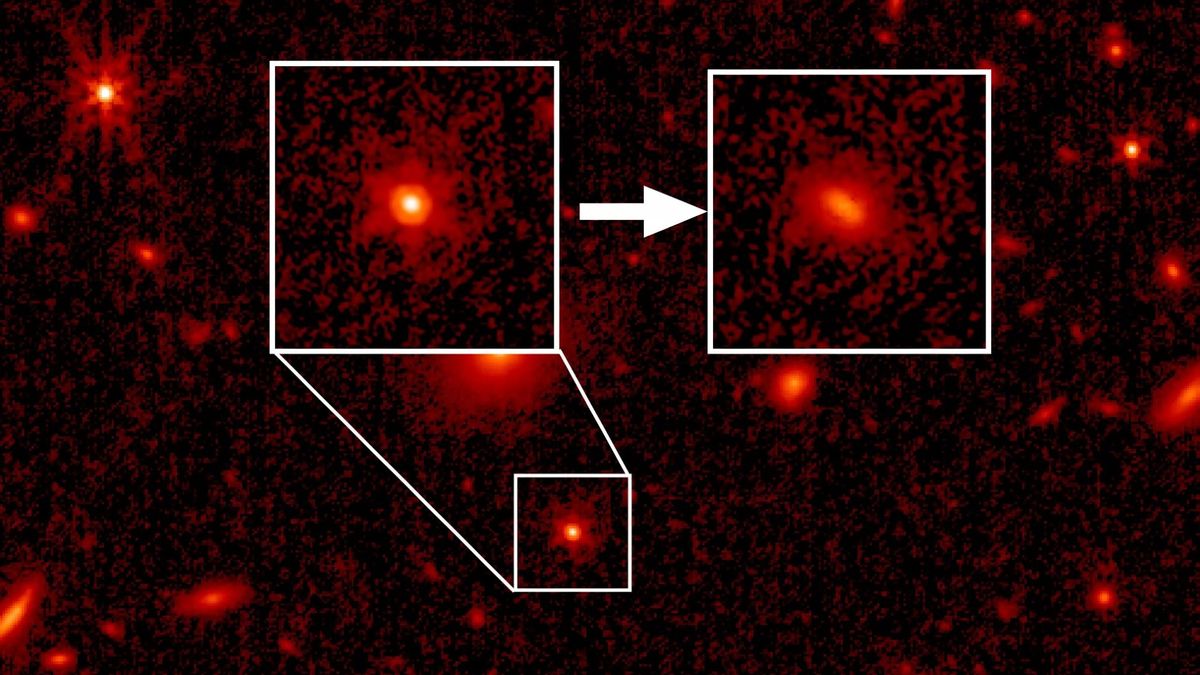James Webb Space Telescope sees 1st starlight from ancient quasars in groundbreaking discovery
By Robert Lea published 1 day ago
The active galaxies and the feeding supermassive black hole-powered quasars are seen as they were when the universe was less than one billion years old.

a black hole appears as a red smudge in a telescope image
The quasar HSC J2236+0032 as seen by the James Webb Space Telescope. (Image credit: Ding, Onoue, Silverman, et al.)
Stars can't hide behind the light from feeding supermassive black holes in the infant universe anymore.
With the aid of the James Webb Space Telescope (JWST), astronomers have seen starlight from two early galaxies that host feeding supermassive black holes, or quasars, for the first time. The findings could eventually help scientists better understand how supermassive black holes quickly grow to masses equivalent to millions or billions of suns and how they and the galaxies that host them evolve hand-in-hand.
"25 years ago, it was amazing to us that we were able to observe host galaxies from 3 billion years back, using large ground-based telescopes," team member and Max Planck Institute for Astronomy researcher Knud Janke said in a statement. "The Hubble Space Telescope allowed us to probe the peak epoch of black hole growth 10 billion years ago. And now we have JWST available to see the galaxies in which the first supermassive black holes emerged."
The team observed two of these so-called active galaxies, which are seen as they were when the 13.8 billion-year-old universe was less than one billion years old. They were able to calculate both the mass of the galaxies and the mass of the supermassive black holes that are powering the quasars, designated J2236+0032 and J2255+0251. Light from these two galaxies has taken 12.9 and 12.8 billion years to reach us, thus appearing to astronomers as they were 870 and 880 million years after the Big Bang, respectively.
More:
https://www.space.com/james-webb-space-telescope-quasar-early-universe?utm_source=notification
